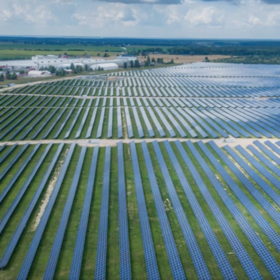From pv magazine International
A Chinese-Qatari research group has assessed the potential of integrating PV power generation with hydroponic farms (SAHFs), which are a kind of horticultural crops that do not use soil and utilize mineral nutrient solutions in an aqueous solvent, usually in greenhouses or closed spaces.
“Hydroponic systems provide water-efficient food production but they are not an energy-efficient solution,” the scientists explained. “This is because they require electricity for heating and cooling, ventilation, irrigation, LED lighting, and other horticultural practices to maintain the hydroponic farm operations in controlled environments.”
The scientists investigated, in particular, how a multi-period, electricity-intensive hydroponic crop production system may be coupled to a PV system under different incentive policies such as feed-in tariff (FIT) programs, rebate schemes, net metering and improving electricity tariff (IET) mechanisms, which consist of simply raising electricity prices for consumers or reducing existing subsidies to the electricity price.
Their approach considered various factors impacting PV system efficiency, including environmental factors, the type of solar array, and the electricity demand from the SAHF. A series of experiments were conducted assuming SAHF operations in Qatar. This framework should provide SAHF developers with enough information to ascertain if a PV system should be installed and which type of solar modules should be used, as well as for identifying optimal sizing and capacity.

Image: Renewable and Sustainable Energy Reviews, Creative Commons CC-BY license
For the business case in Qatar, the scientists took into account a 1200 m2 hydroponic farm containing 60 growing trays with an area of 10 m2 each, and an overall 600 m2 are used for growing. The farm has an estimated cost of $4,984 per tray, with the interest rate being assumed to be 2.5%. Electricity and water tariffs were assumed to be $0.036/kWh and $0.0015/L, respectively. Four crops such as tomato, cucumber, lettuce and pepper, as well as six types of PV systems were considered. One-at-a-time (OAT) sensitivity analysis was used to identify the best project configuration under the four different incentive schemes.
The incentive threshold under the IET policy was found to be $0.0425/kWh, while for feed-in tariffs and net metering the threshold was $0.0063/kWh and $0.027/kWh, respectively. For the rebate scheme, a minimum rebate of 14.90% was considered necessary.
The scientists explained that the IET scheme is the most effective in pushing farmers to resort to solar, although it is the more expensive for them, while feed-in tariffs and rebates are indicated an ideal solution for solar hydroponics farms with limited size. “For the hydroponic farmers, once it is profitable to engage in solar energy generation and the right type of PV system is selected, the best strategy is to take full advantage of the available space to maximize the PV system capacity if the surplus electricity can be sold to the grid or other entities,” they emphasized. “The profit of the SAHF is more sensitive to the subsidy levels of the surplus FIT and IET than other policy parameters, while the outputs of the farm show insensitivity to all the subsidies.”
The proposed model was described in the paper “Decisions on design and planning of solar-assisted hydroponic farms under various subsidy schemes,” published in Renewable and Sustainable Energy Reviews. The research group comprises scientists from the Nanjing University of Aeronautics and Astronautics in China and the Hamad Bin Khalifa University in Qatar.
This content is protected by copyright and may not be reused. If you want to cooperate with us and would like to reuse some of our content, please contact: editors@pv-magazine.com.









1 comment
By submitting this form you agree to pv magazine using your data for the purposes of publishing your comment.
Your personal data will only be disclosed or otherwise transmitted to third parties for the purposes of spam filtering or if this is necessary for technical maintenance of the website. Any other transfer to third parties will not take place unless this is justified on the basis of applicable data protection regulations or if pv magazine is legally obliged to do so.
You may revoke this consent at any time with effect for the future, in which case your personal data will be deleted immediately. Otherwise, your data will be deleted if pv magazine has processed your request or the purpose of data storage is fulfilled.
Further information on data privacy can be found in our Data Protection Policy.